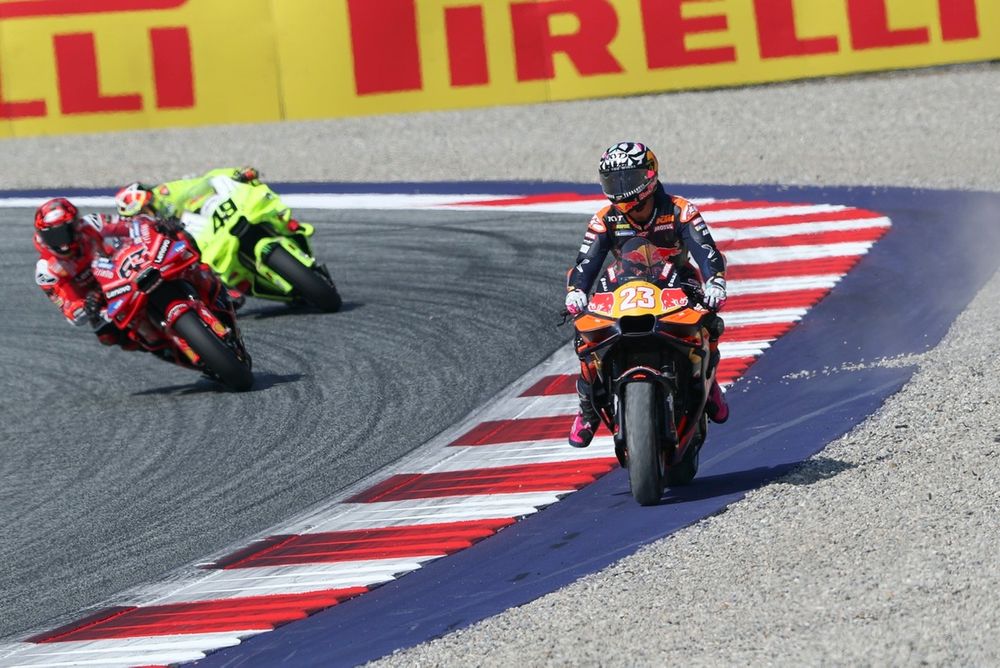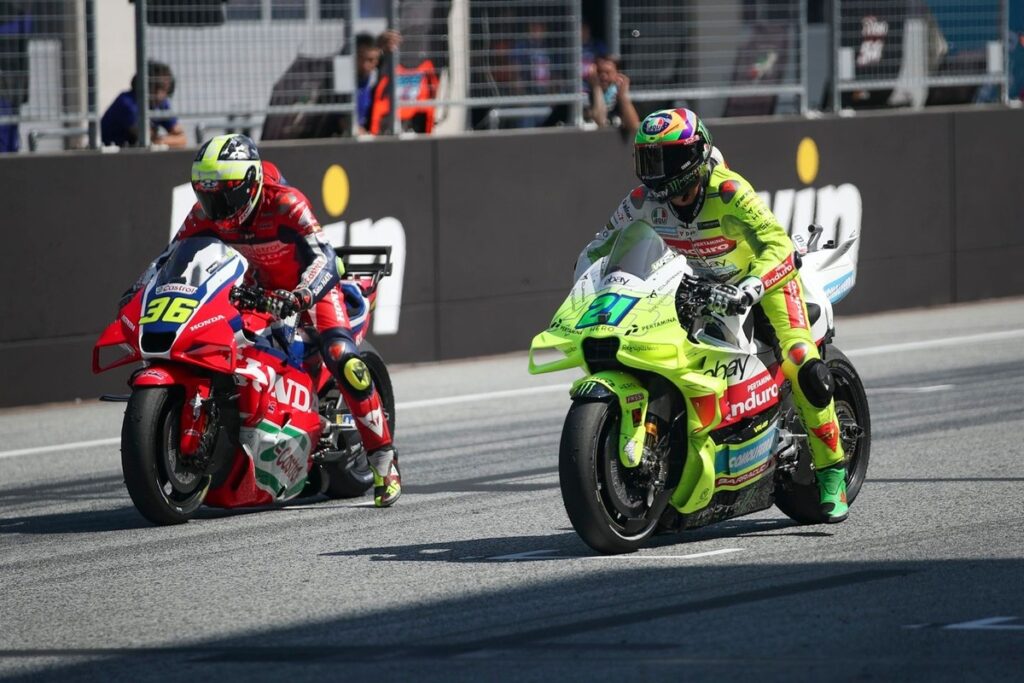Two-time MotoGP world champion Casey Stoner has come out strongly against the anti-highside aid being rolled out at this weekend’s Austrian Grand Prix.
The Australian’s sharp criticism, which followed Free Practice 1 at the Red Bull Ring on Friday, came in the wake of similar comments by frontrunners Marc Marquez and Pedro Acosta a day earlier.
Stoner felt that the stability control system – as it is officially known – was indicative of a worrying trend that repeats mistakes made by Formula 1 in the past.
“Right now, we’re making champions out of engineers,” said the 2007 and 2009 champion. “We’re not making champions out of riders. And we’re going into an era of all the mistakes that Formula 1 made.
“We’ve had all these examples in the past of these things not working, yet we’re just following in all of the directions of every issue that Formula 1 has spent years getting rid of.
“This weekend, they’ve brought a whole other level of electronics. Speaking to the riders, you can literally go and twist the throttle. You’ve got nearly 300 horsepower and you can twist the throttle and nothing happens.
“You’ve got the best riders in the world riding the easiest bikes to ride in the world, and I don’t see this as being anything that I’m interested in.
Casey Stoner
Photo by: Gold and Goose Photography / LAT Images / via Getty Images
“You have no more control over how much slide you have. Already when I was testing, just before I stopped [riding completely], I wasn’t allowed to use any more of the clutch going into the corner because it confused the system.
“So there’s no more element of skill with every aspect. You literally just have to brake hard, get it into the corner, and then… all the guys are talking about how now they can just literally twist the throttle, press a button [that] drops it down. There’s just too much going on.”
Stoner did not buy the official line that the stability control system had been introduced in order to make MotoGP safer.
“I don’t see it as being safer. If you take all of the control out of the rear of the bike, you lose any fear of the bike,” he explained. “And then you just start to push harder and harder in one aspect, which is the front end.
“Then if you lose the front end, so often it comes back onto the track. And we’ve seen catastrophic accidents when you lose the front end of the bike and it comes back.
“So the more safe you make the rear, the worse it’s going to be on the front. And then we’re going to see worse things again.
“Also, your top speed at the end of the straight gets faster again. The margin for error in braking points is tiny, and then you have everybody absolutely on the limit in this area.”
Stoner’s words rang true in the practice session that followed shortly after his press conference. While there were no high-side crashes, numerous riders went off the road after overdoing it on the brakes. Some, such as Enea Bastianini, did so multiple times.

Enea Bastianini, Red Bull KTM Tech 3
Photo by: Gold and Goose Photography / LAT Images / via Getty Images
While it should be noted that braking is always a challenge at the Spielberg layout, the top 10 riders in the session – who will progress directly to Q2 on Saturday – were to a large degree those who kept it together under braking.
Stoner was also not positive about the reduction in aerodynamics and engine capacity planned for MotoGP in 2027, along with the banning of ride height devices.
Asked if that year’s rules went far enough, the 39-year-old replied: “Not even remotely close. You’re making a bike lighter, so then the braking point becomes less. You’re actually going to be slower at the top speed because they don’t have this ride-height device now. So it’s going to be less top speed [with a] lighter bike. [This means that] going into the corner, braking points are shorter, with less opportunity for overtaking.
“They’re still [going to have] winglets and they’re going to be carrying probably higher corner speeds as well. So that’s going to create turbulent air on a lighter bike. They’re still going to be having stability issues. They’re still going to be having tyre temperature issues.”
Stoner also pointed out the cost factor involved with aerodynamics: “We were talking not too many years ago [about how MotoGP was] sort of struggling with costs and trying to cost-cut and all these sorts of things. [Aero] is certainly not making it better. [Aero] is the most expensive thing that you can do.
“I just don’t know how nobody can see the problems. Each step they do in this direction is making it go in the wrong way.”
In this article
Be the first to know and subscribe for real-time news email updates on these topics
Read the full article here

